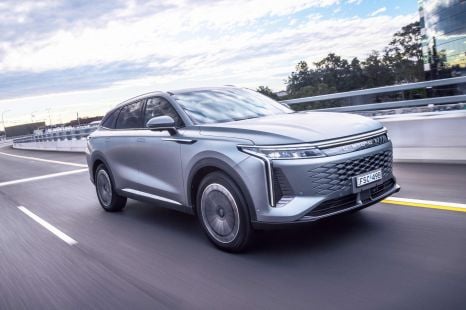

Damion Smy
2025 Omoda 9 review
4 Days Ago
This quirky little box is the Venue, the new entry-level Hyundai. It’s a surprisingly charming little thing even if, in some ways, it’s a step back from the car it replaces.
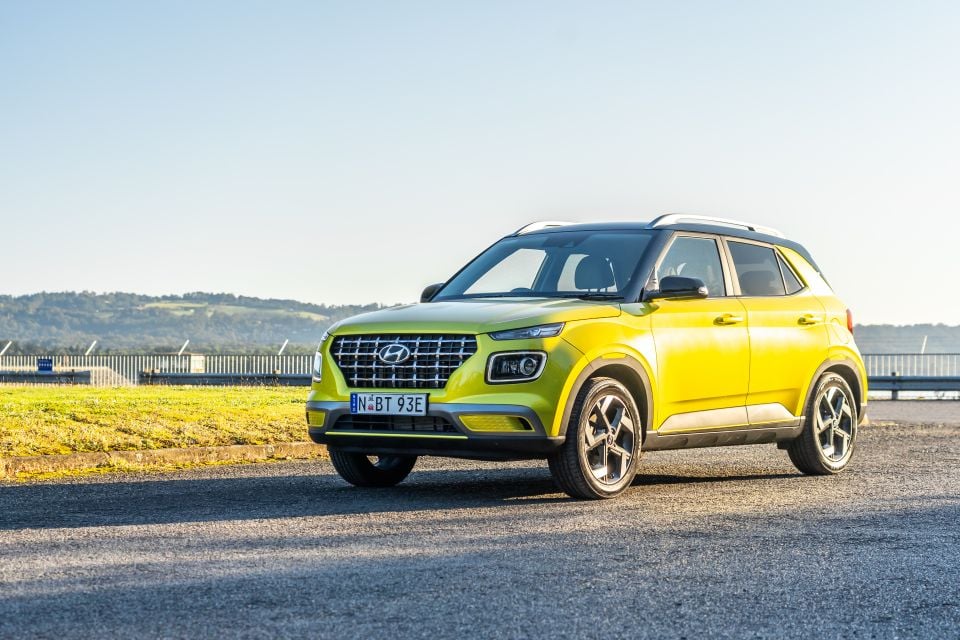
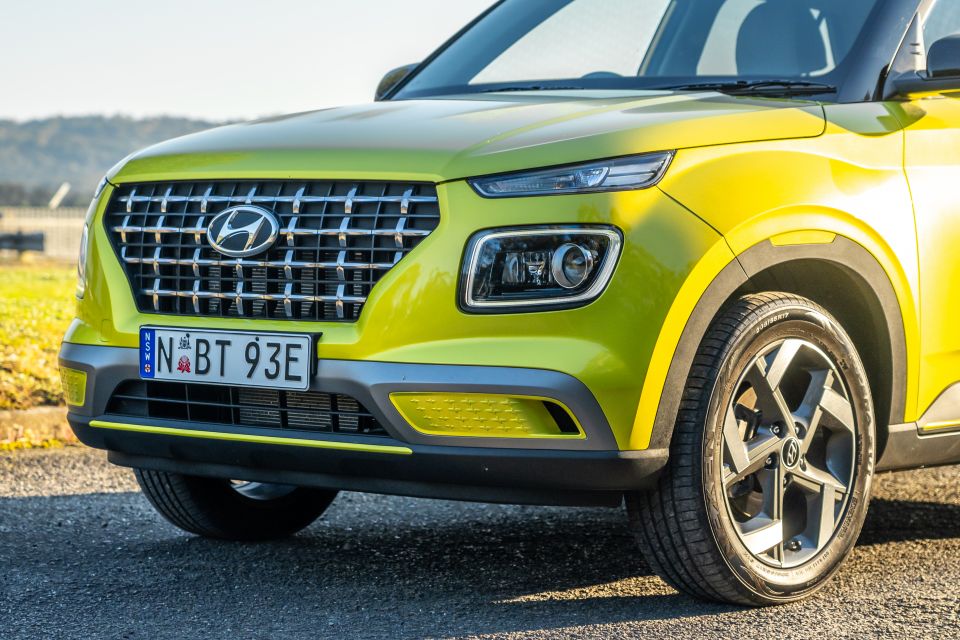

News Editor
New from
$19,990
excl. on-roads

News Editor
New from
$19,990
excl. on-roads


News Editor
New from
$19,990
excl. on-roads

News Editor
New from
$19,990
excl. on-roads
Quickly see how this car stacks up against its competition. Select any benchmark to see more details.
Where expert car reviews meet expert car buying – CarExpert gives you trusted advice, personalised service and real savings on your next new car.
Meet the Hyundai Venue, the cheapest way to get into a new Hyundai.
Though it was the best-selling car in its segment, the Hyundai Accent has now been retired. There’s a new generation available in other markets but it hasn’t been engineered for right-hand drive.
Though it slips under $20k, the Venue still costs $4500 more than the cheapest 2019 Accent.
It’s 75mm shorter than the old Accent hatch but 70mm wider and, most importantly for SUV-loving consumers, 142mm taller. Though it’s marketed as an SUV, it comes only with front-wheel drive.
The micro crossover SUV idea has been done before. There was the Daihatsu Terios of 1997, followed by the 2000 Suzuki Ignis and 2002 Holden Cruze twins.

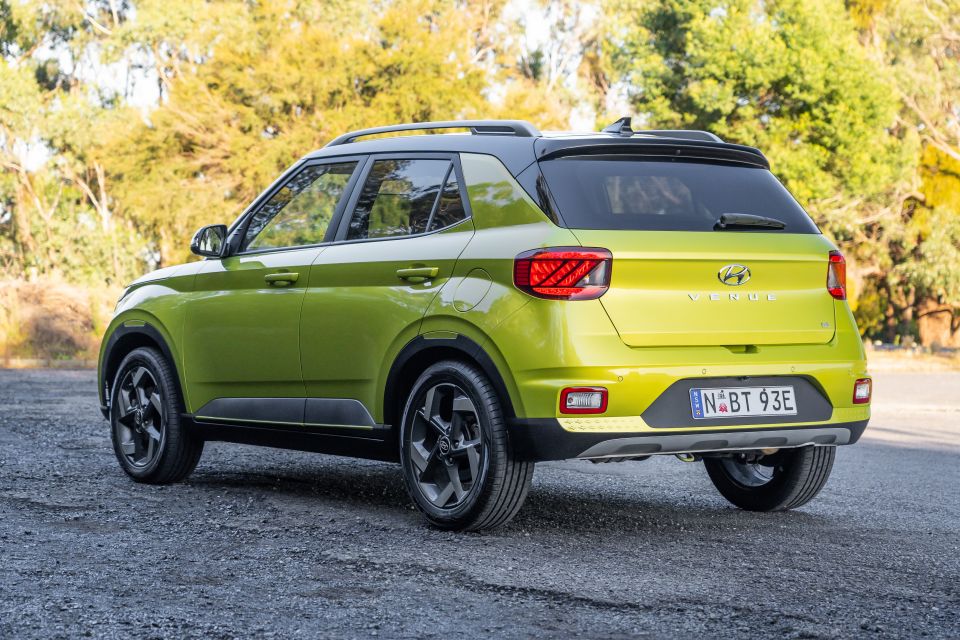
Even the current Suzuki Ignis is marketed as a micro SUV, though there’s nothing particularly SUV-like about it.
Where the Venue might rankle some consumers is with its exterior styling, particularly the split-level lighting up front which echoes the larger Santa Fe.
Personally, I find the Hyundai Venue relatively cute and well-proportioned.
There’s no denying though that it looks best in top-range Elite trim, which adds LED tail lights and 17-inch alloy wheels.
Venue Elite models also come with a two-tone exterior treatment, with a different colour used for the roof, mirror caps and – on some combinations – trim on the bumpers.
The two-tone treatment results in some eye-catching colours, including the funky Cosmic Grey/Acid Yellow.
The Venue Elite also uses a different grille from the lesser Go and Active, consisting of an array of chrome crosses with arms that slope back towards the engine, creating a nice, textured look.
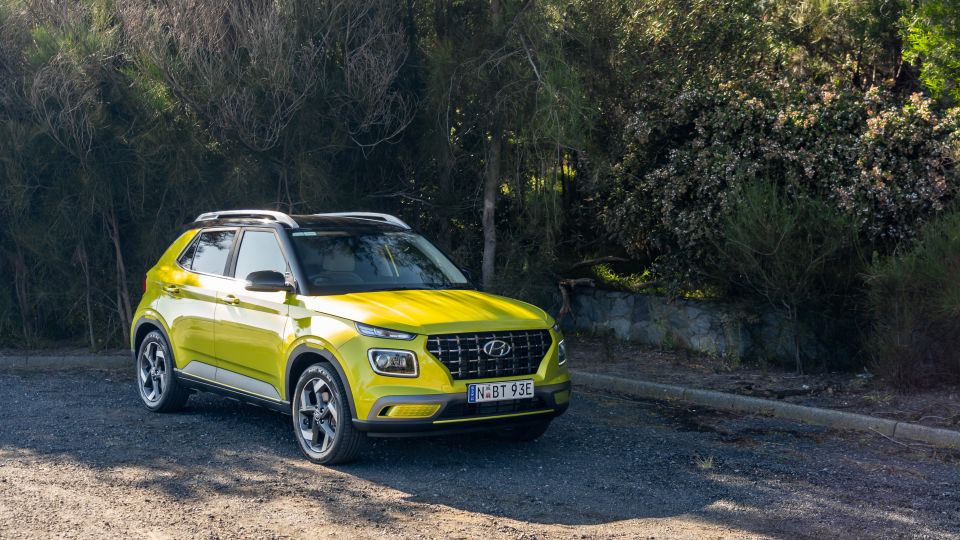
The base Venue Go opens the range at $19,990 before on-road costs. At that price, you get 15-inch steelies, cruise control and a reversing camera, as well as an 8.0-inch touchscreen infotainment system with Android Auto and Apple CarPlay.
Opting for the Elite trim bumps the Venue’s price up to $25,490 before on-road costs, just $10 less than a Hyundai Kona Active.
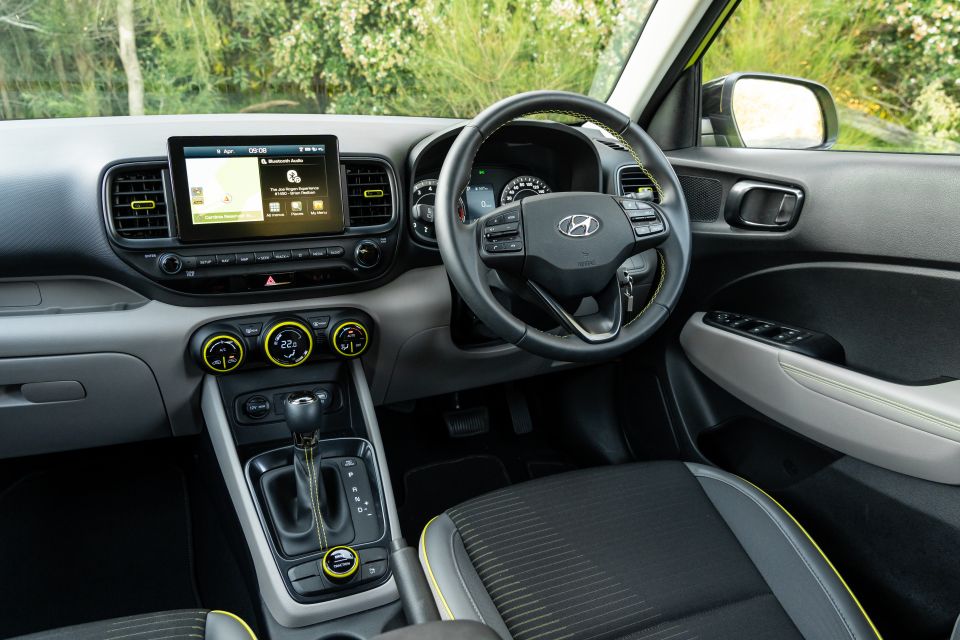
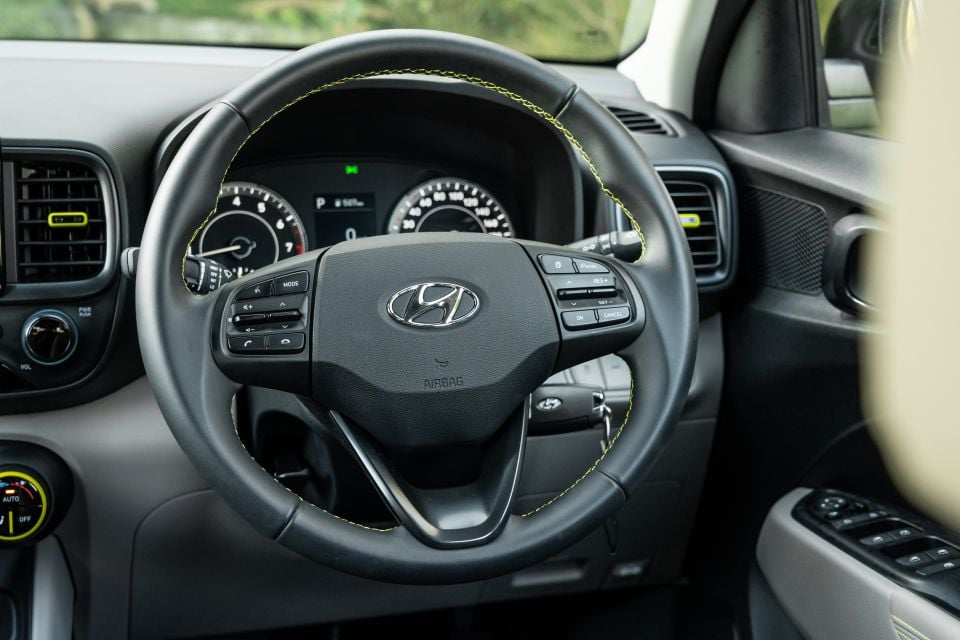
In terms of price, perhaps the Venue’s most direct rival is the MG ZS, despite that car’s larger dimensions. It also lines up against the similarly affordable Kia Stonic and Suzuki Vitara.
Over the base Go, the Venue Active adds niceties like a leather-wrapped steering wheel, rear parking sensors, 15-inch alloy wheels, power-folding exterior mirrors, six-speaker sound system, and LED daytime running lights.
The featured Venue Elite upgrades to 17-inch alloys and adds satellite navigation and DAB+ digital radio. More importantly, it adds extra safety kit.
You’ll only find regular remote central locking, though, and there’s no push-button start.
All 2020 Hyundai Venue models come standard with low speed autonomous emergency braking (AEB) with forward-collision warning, as well as lane-keeping assist, anti-lock brakes and front, front-side and curtain airbags.
The Venue Elite adds blind-spot monitoring and rear cross-traffic alert. While it’s priced lineball with the second cheapest Kona and is otherwise equipped similarly, you’ll have to spend over $30k for a Kona Elite to get those safety features.
The Hyundai Kona Active does, however, have a superior five-star ANCAP rating.
The Venue received a rating of four stars. Adult occupant protection was rated at 91 per cent and child occupant protection at 81 per cent, but the Venue was let down by a low score (62 per cent) for the effectiveness of its safety assist features such as its AEB.
Dummy pedestrians also didn’t fare too well, the Venue scoring 62 per cent.
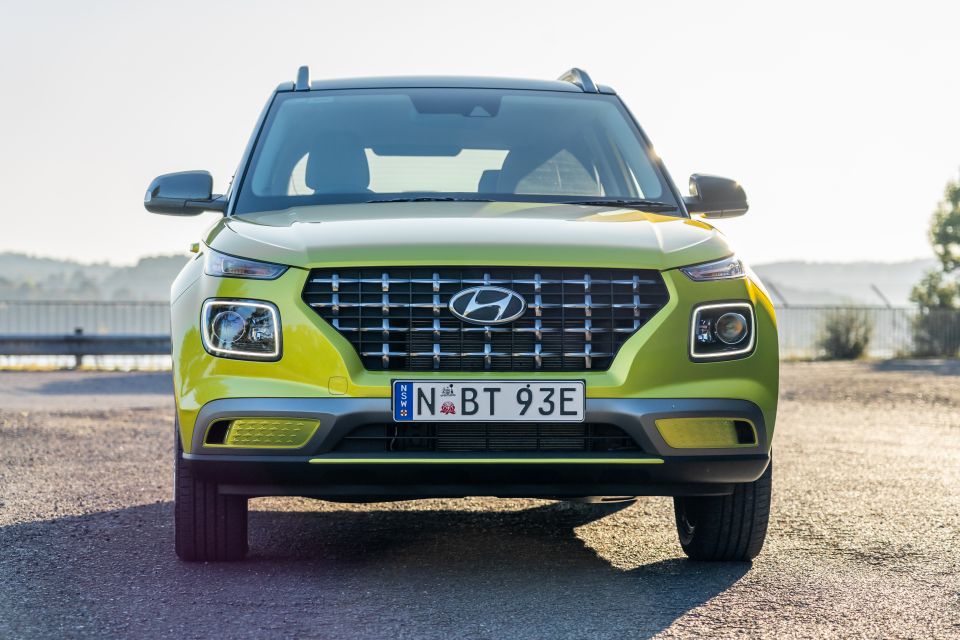
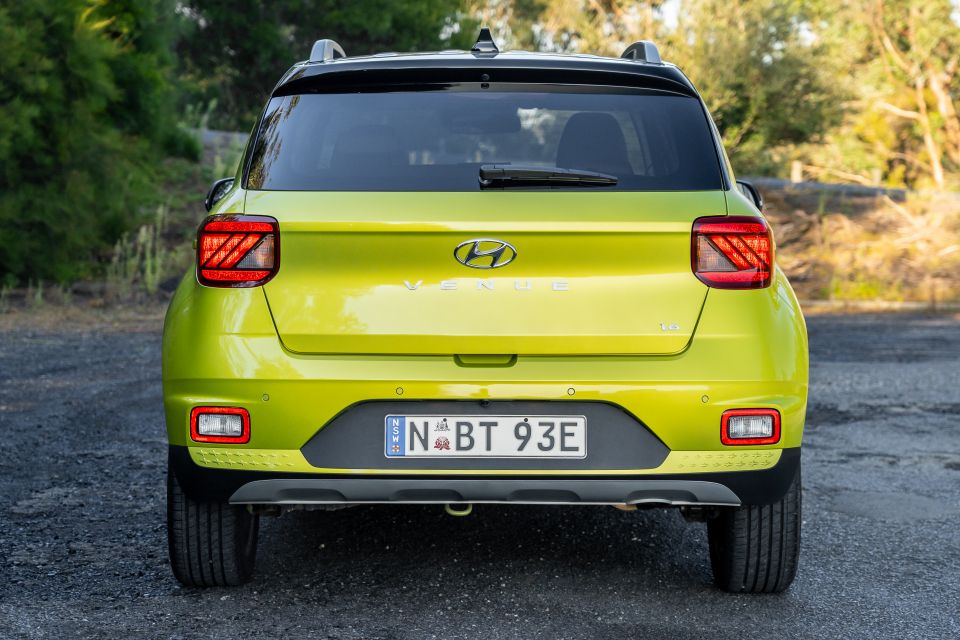
The Venue’s interior gets the fundamentals right.
Side visibility is superb due to fairly large windows, though it’s only average out the back.
With the front seats adjusted for 180cm occupants, there was still sufficient leg and knee room for rear seat occupants.
You’ll find three top-tether and two Isofix anchors for child seats in the second row.
The Venue is no limousine but it’s spacious for a car that measures a stubby 4040mm long, 300mm shorter than an i30.
The dashboard also has a refreshingly clean and simple layout.
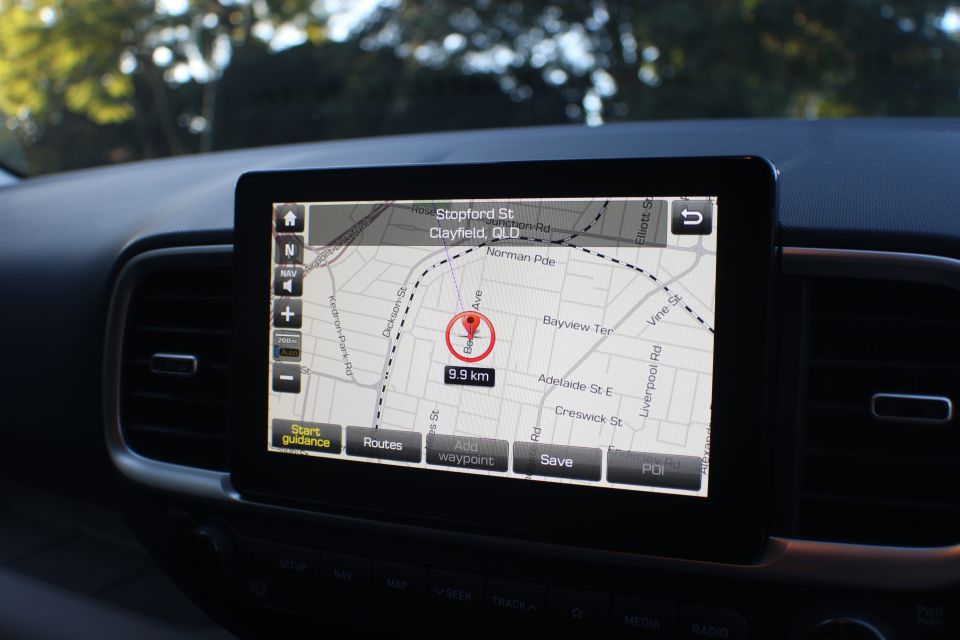
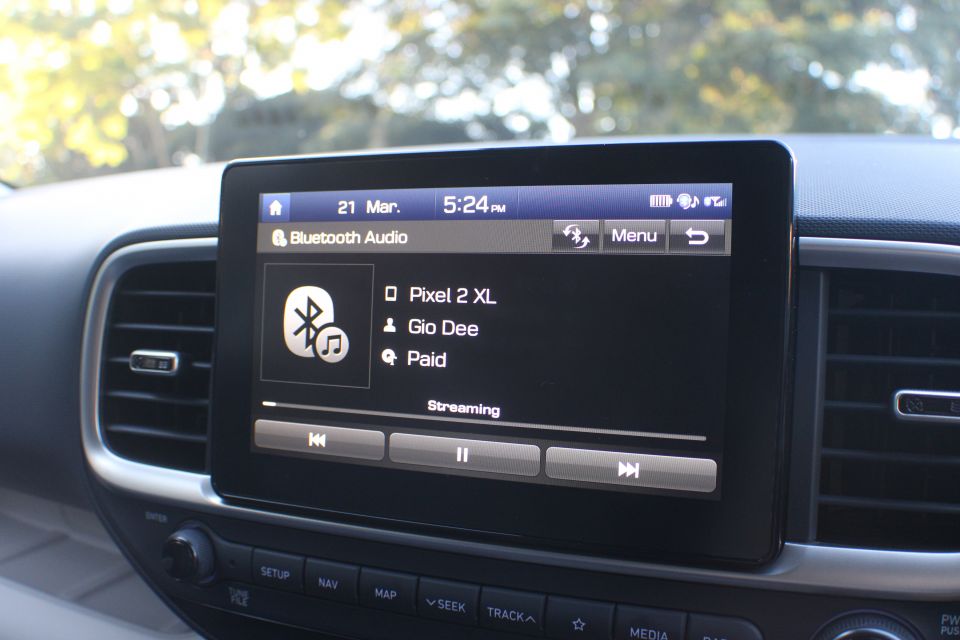
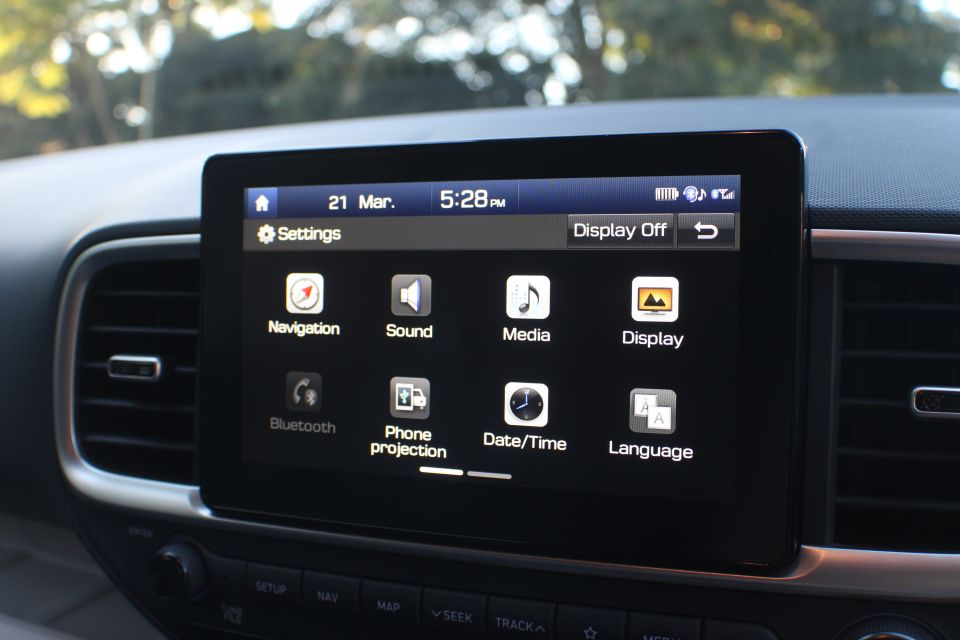
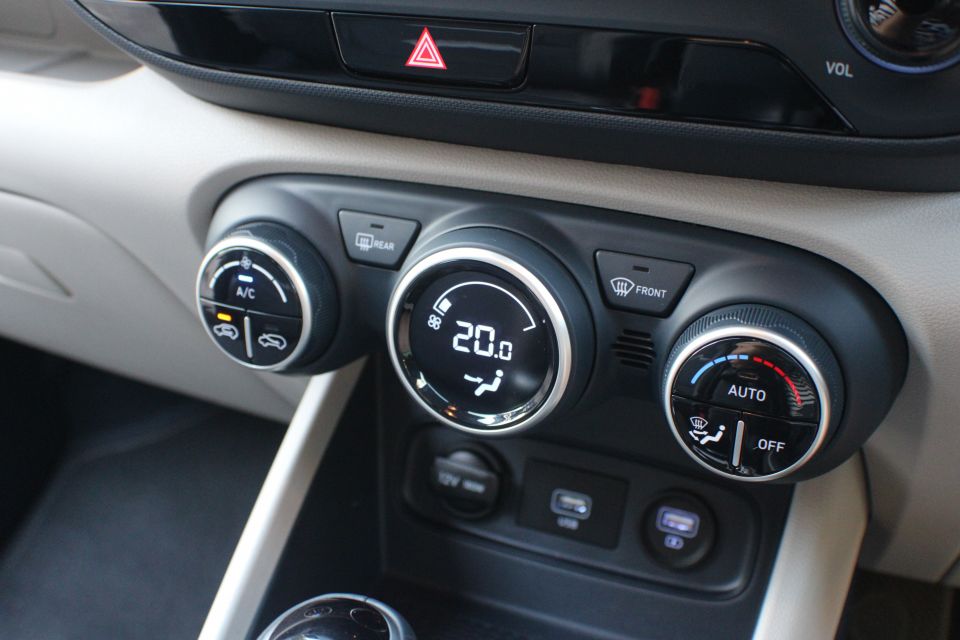
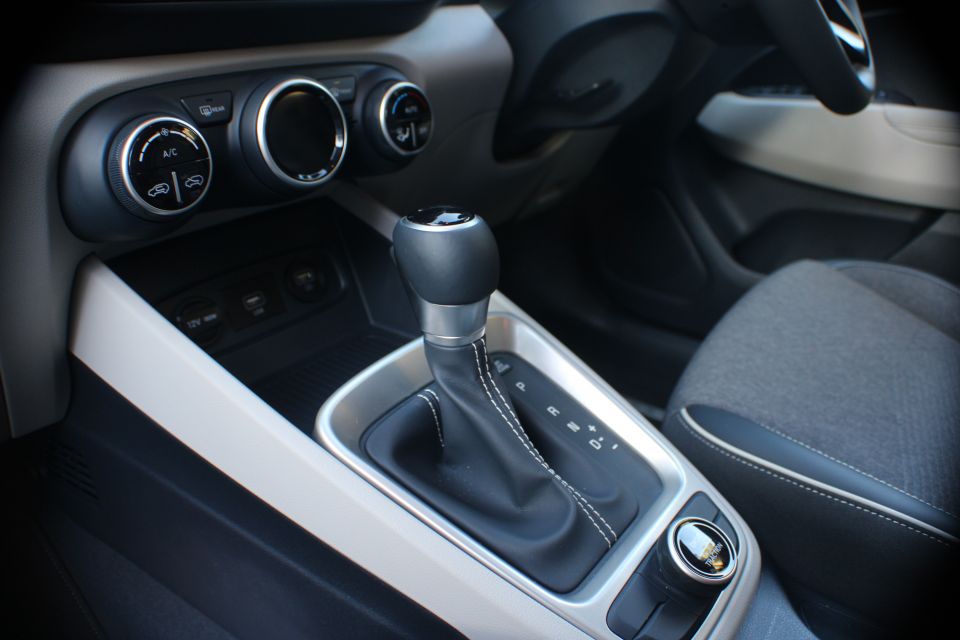
The 8.0-inch touchscreen is flanked by air vents, with a row of buttons and two knobs below to control the stereo.
The second tier of the dashboard features three round dials, the outer two controlling the air conditioning and the central one featuring an LCD screen that displays the current temperature and fan speed.
Below are a couple of USB outlets and a 12V outlet, as well as a fairly deep shelf.
Hyundai and Kia infotainment systems never fail to impress with their general useability and an 8.0-inch unit is competitive at the Elite’s price point and impressive at the Go’s.
The Elite’s satellite navigation boasts more modern and attractive graphics than older Hyundais as well as some rivals. However, the map’s constant zooming in and out while you’re driving is distracting.
Much as the Elite trim provides a welcome boost to the Venue’s exterior design, it also gives the interior some more panache provided you select the right exterior colourway.
Called the Denim interior, our tester’s cabin didn’t resemble Levi’s so much as the living room of a modern apartment.
The seats are trimmed in an attractive blue cloth more at home on a wing back chair from Ikea while the dashboard is blue with contrasting off-white trim.
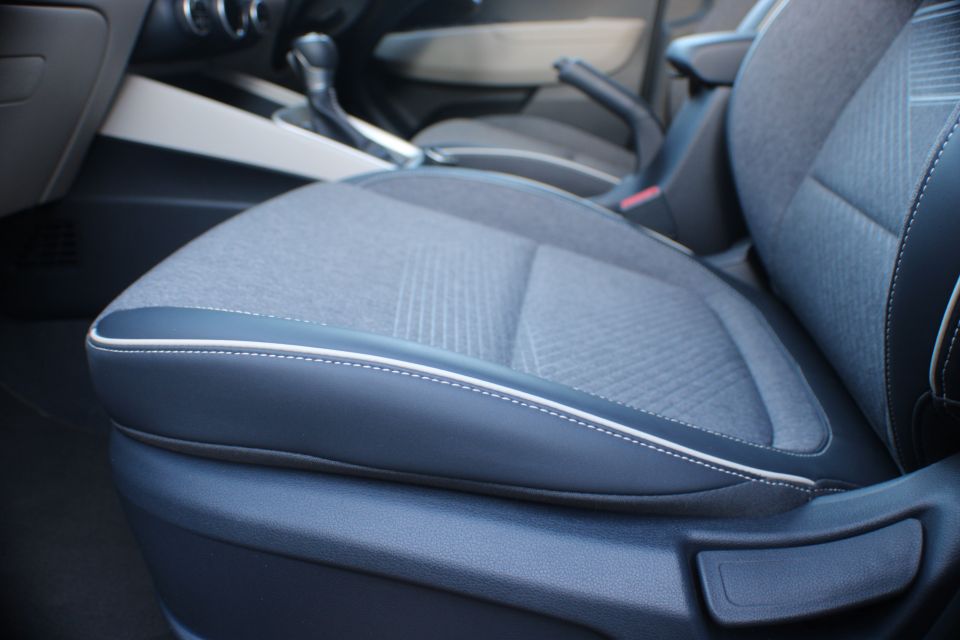
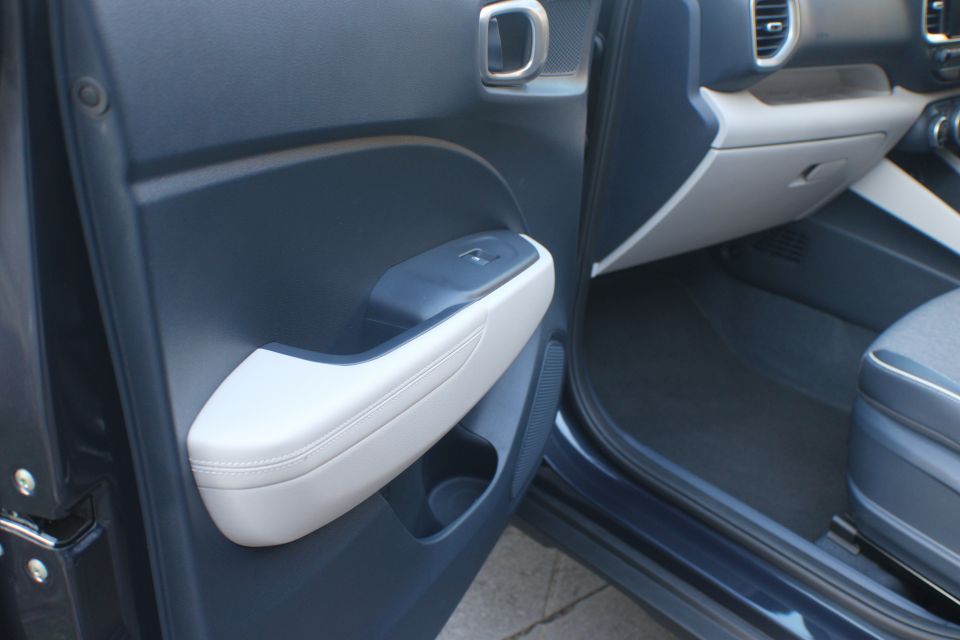
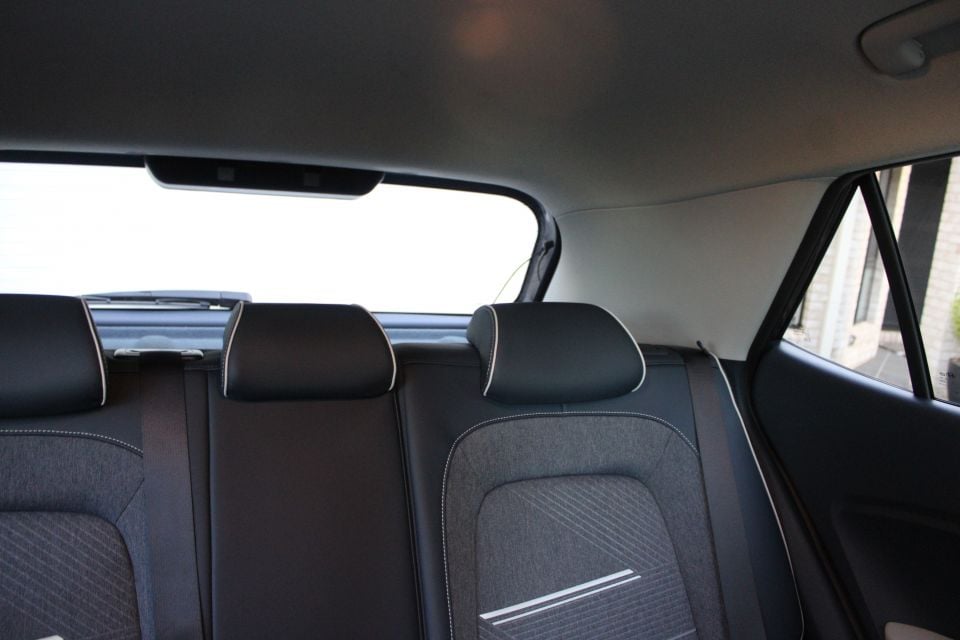
That’s right, a blue dashboard. And doors. And carpets. The blue is dark and subtle enough to avoid looking gauche.
The off-white colour used on the lower half of the dash and the arm rests of the doors helps break up the sea of blue and the pieces of leatherette trim on the doors are a welcome touch.
You may disagree but, to my eyes, the interior is modern and attractive. The Elite’s “denim” and two-tone grey/white interior options represent a refreshing change from the alternative black-on-black interior and have a more upmarket air.
That’s welcome as the Venue’s interior is awash with hard plastics. That’s not altogether surprising for an entry-level SUV though there are a few elements that seem surprisingly cheap, even for such a product. For example, if you press down – even lightly – on the top of the dash, the plastic bows.

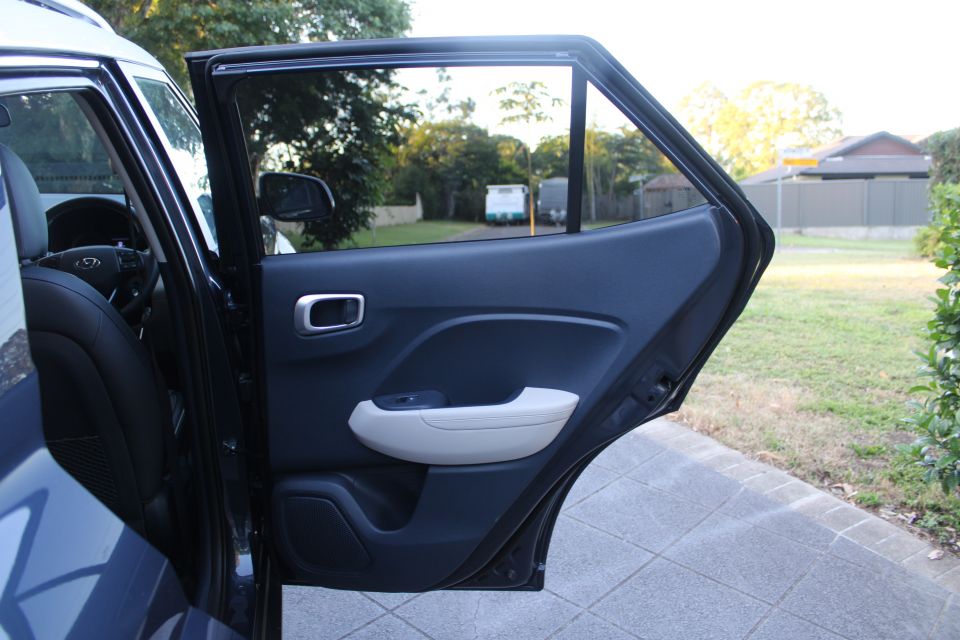
The little ledge on the passenger side of the dash is a sensible place for a passenger to place their phone but, unlike the same design element in the larger Santa Fe, the ledge lacks any kind of rubberised material to keep objects in place.
The tailgate also has a tendency to rattle over speed bumps. Other than those issues, however, the Venue feels solidly screwed together.
It also passes that most tangible quality attribute: the doors close with a solid thunk. That’s despite somewhat wide panel gaps where the doors meet the body.
Though not a quality issue, arguably the most frustrating part of the Venue interior is the prolific use of button blanks.
Even though the Elite is the range-topping Venue, the knob to toggle between drive and traction modes is surrounded by four spaces for buttons, only one of which has a button.
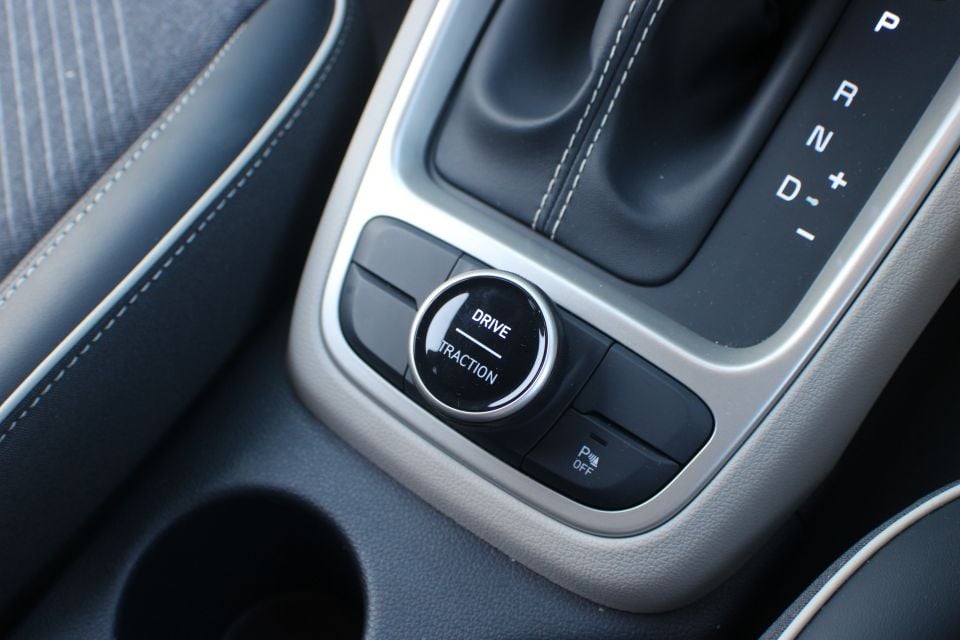
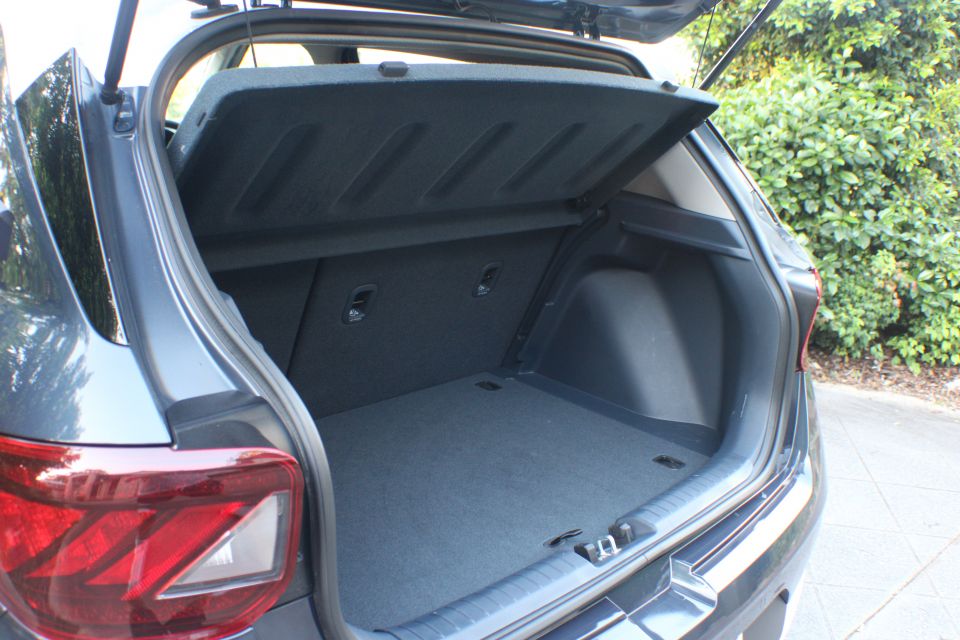
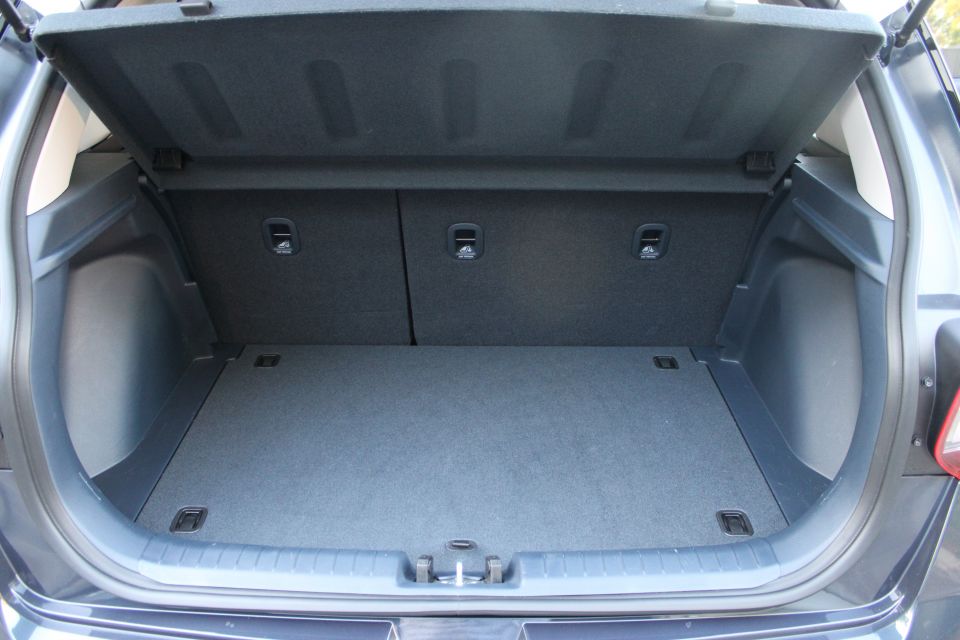
The rest is button-shaped plastic. It’s not even symmetrical and it’s plain insulting for a top-spec model.
Out back, you’ll find 355L of cargo space in the boot. That’s almost identical to the considerably larger MG ZS, as well as the defunct Accent hatchback.
All Venues use a naturally-aspirated 1.6-litre four-cylinder engine producing 90kW and 151Nm.
It’s mated to either a six-speed manual or six-speed automatic transmission, though the Elite is automatic-only.
The Venue’s outputs are down from the Accent it ostensibly replaces. That car’s 1.6-litre produced 103kW and 167Nm and had around 55kg less car to haul around.
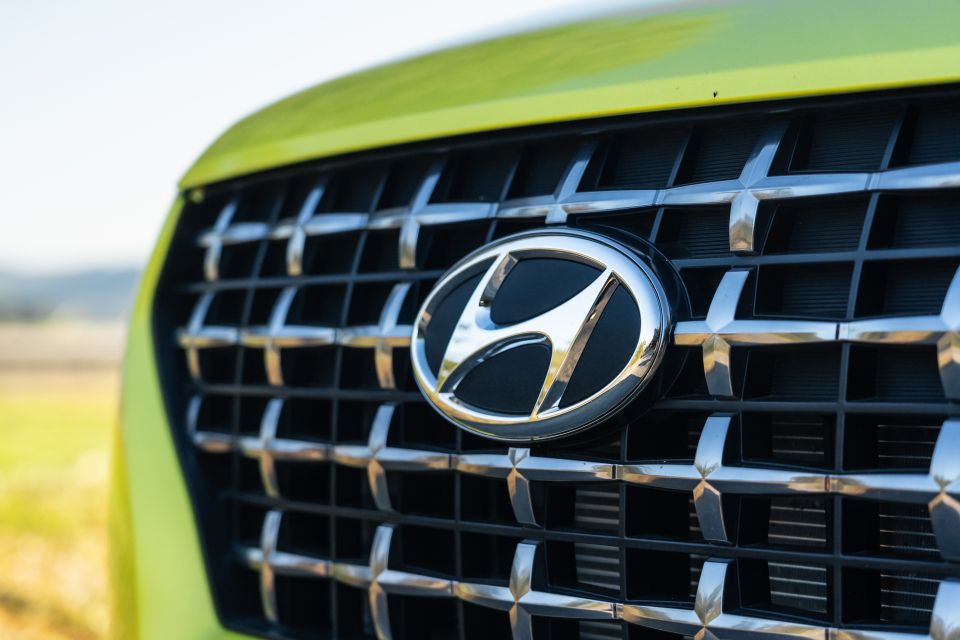
Hyundai’s smallest SUV does compare favourably, however, with the MG ZS. Both of its Chinese rival’s available engines have similar outputs but rely on more expensive 95RON premium unleaded fuel.
The Venue, in contrast, sips 91RON regular unleaded fuel.
In theory, the Hyundai Venue shouldn’t be enjoyable to drive.
It’s fairly softly sprung and there’s ample body roll, the little crossover leaning in corners. Like many small SUVs, too, it feels somewhat top-heavy due to its higher centre of gravity.
The steering is light, too, with lots of play. Not to mention, under the bonnet is the aforementioned 1.6-litre.
Hyundai’s atmo four-bangers tend to be rather uninspiring and there’s also a significant deficit in power and torque compared to the 2.0-litre mill that does duty in the Kona one segment up. That larger engine produces 110kW and 180Nm.
Somehow, however, it all comes together nicely.
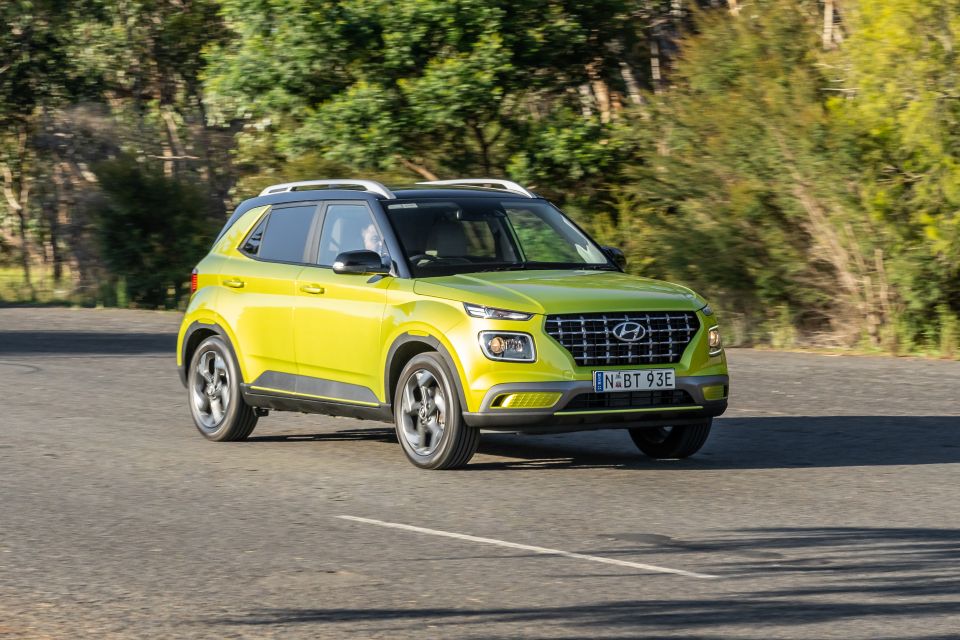
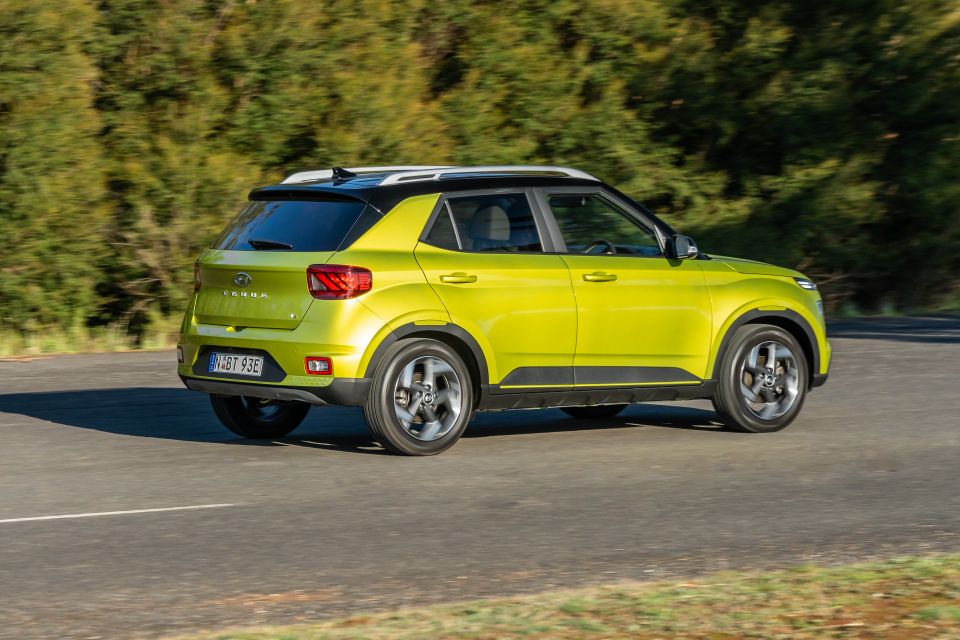
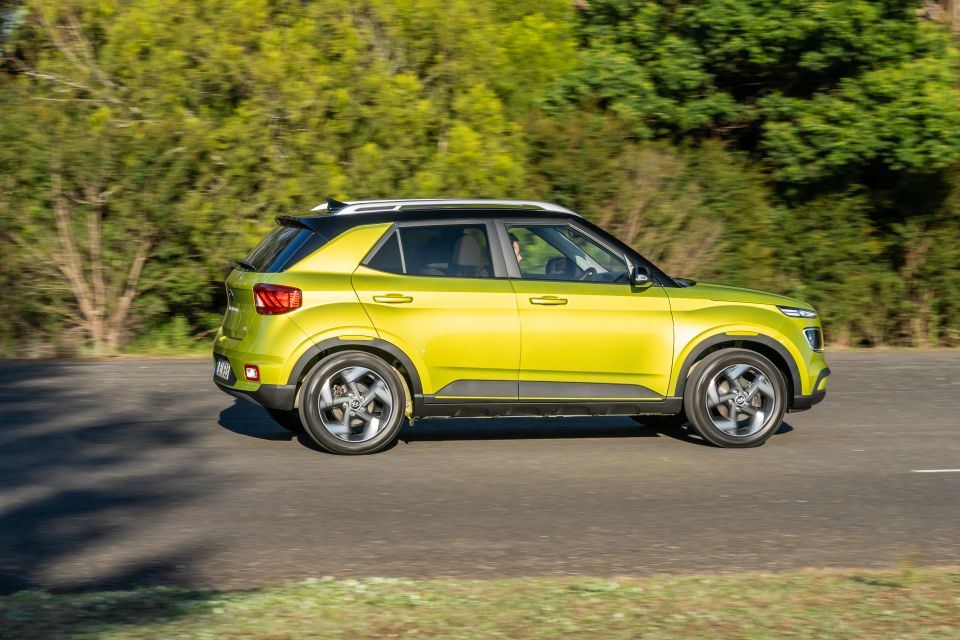
Sure, the 1.6-litre is a bloody raucous little thing when you really rev it. However, Hyundai’s done a good job in gearing the six-speed automatic transmission so that you don’t have to floor it constantly.
It swaps cogs effectively and always finds the right gear, which means the Venue has no trouble keeping up with traffic.
There’s little need to select Sport mode as you might want to with Hyundai’s 2.0-litre. The 1225kg kerb weight, 150kg less than a front-wheel drive Kona, might also be responsible for the Venue’s nimble feel.
No, you won’t be taking the Venue on tight mountain switchbacks but Hyundai’s baby SUV is nevertheless enjoyable to weave through traffic. Perhaps the most noticeable flaw in its dynamic repertoire is its occasional tendency to hold onto a gear for slightly too long, resulting in some slight droning.
While this droning is only occasionally noticeable around town, it’s prominent every time you take the Venue onto the highway. Even in sixth gear, the Venue sits at 2500rpm.
It’s not as bad as older Hyundai and Kia products with a four-speed automatic but it means highway engine noise is more prominent than some rivals and other Hyundais.
Ride quality is perfectly acceptable for an entry-level SUV, with a composed feel that’s rattled only by larger bumps and ruts in the road. Once again, Hyundai’s local suspension tuning has paid off.
Though you’re unlikely to be taking a small crossover SUV off-road, especially one that’s only front-wheel drive, Hyundai has included sand, mud and snow traction modes. These are accessible via the same knob as the drive modes.
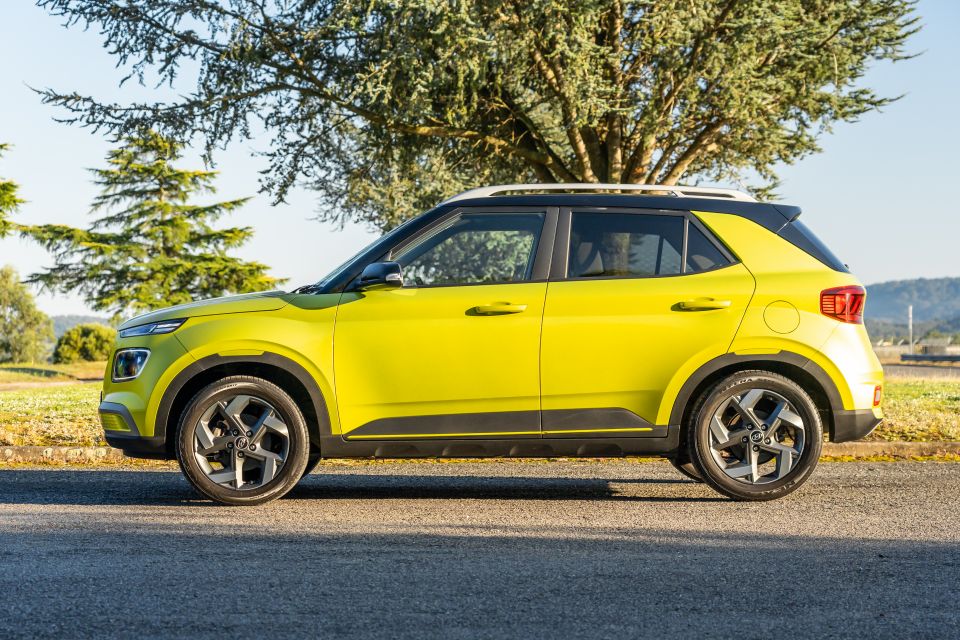
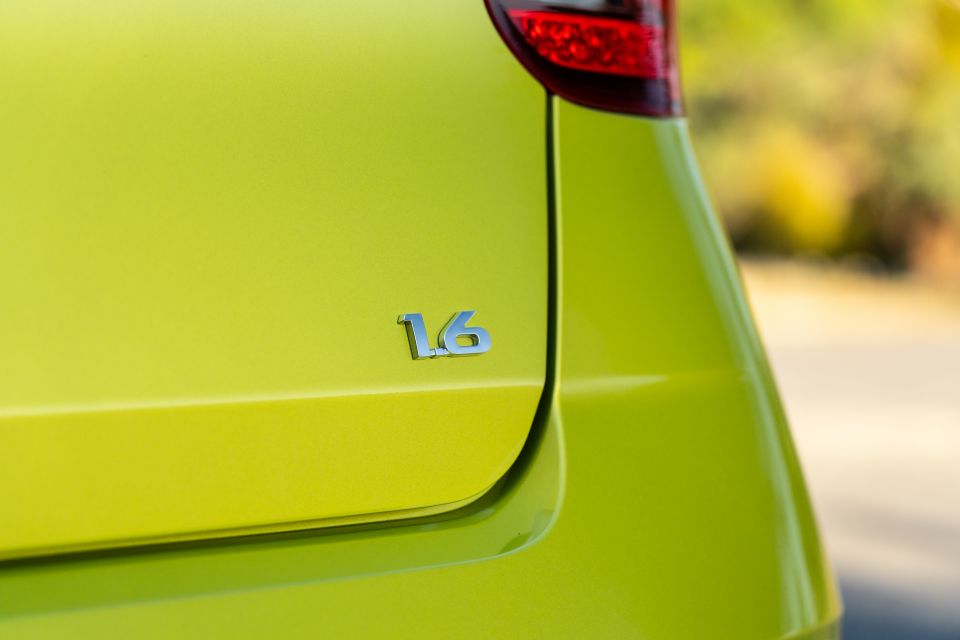
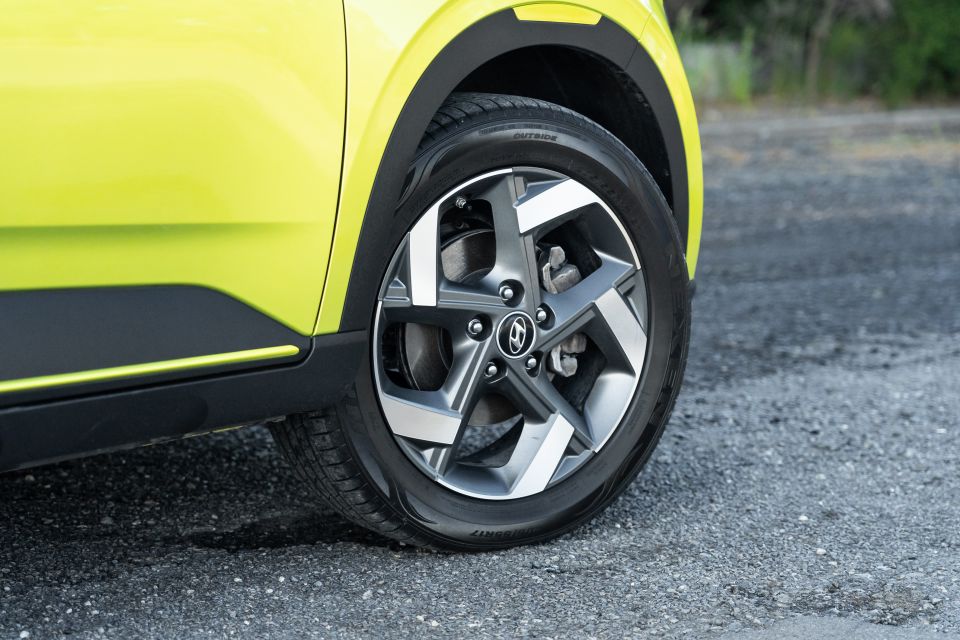
In a mix of city and highway driving, the Venue averaged 7.6L/100km.
That’s surprisingly close to the Venue automatic’s combined cycle rating of 7.2L/100km, which in turn is only marginally more than the automatic Accent (6.6L/100km) and MG ZS (6.7-7.1L/100km).
The Venue has a five-year, unlimited kilometre warranty but Hyundai’s Lifetime Service Plan guarantees capped-price services even after the warranty ends.
Service intervals are every 12 months or 15,000km. The average cost of a service over five years is $315.
On paper, the Venue looks like it should disappoint.
It’s supposed to replace the Accent but costs thousands more and has less power and torque.
Against these odds, however, the Venue proves to be a charming little thing.
It feels zippy and nimble around town and it has a well-packaged interior for such diminutive dimensions. Those are two big pluses for small SUV buyers.
In Elite trim, it’s particularly eye-catching and it’s better-equipped than similarly-priced models from the next class up.
In every trim, too, the Venue has more safety kit than an MG ZS, though its Chinese rival will soon get more active safety equipment when a facelifted model arrives this year.
If you can get past the polarising styling – opting for the flashier Elite goes a long way towards mitigating that – the Venue is a pleasant little SUV.
You might have noticed two different cars in the images. Both the Melbourne and Brisbane teams have driven the Venue Elite, and our images are a combination of the two.
Where expert car reviews meet expert car buying – CarExpert gives you trusted advice, personalised service and real savings on your next new car.
William Stopford is an automotive journalist based in Brisbane, Australia. William is a Business/Journalism graduate from the Queensland University of Technology who loves to travel, briefly lived in the US, and has a particular interest in the American car industry.


Damion Smy
4 Days Ago
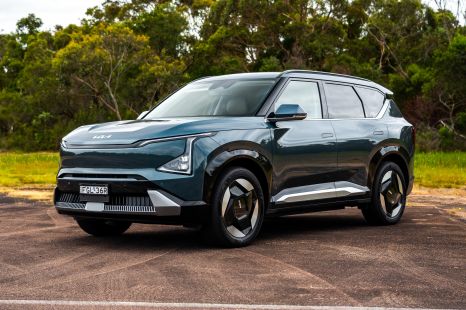

James Wong
4 Days Ago


Angus MacKenzie
2 Days Ago


Paul Maric
1 Day Ago
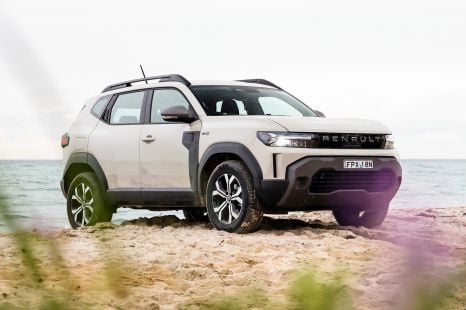

Max Davies
21 Hours Ago
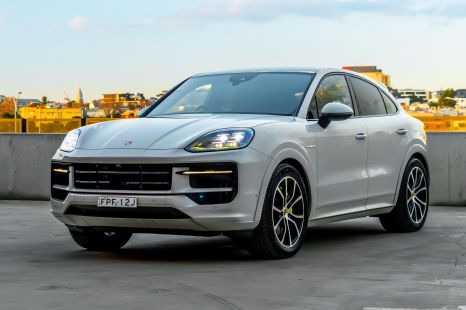

James Wong
14 Hours Ago